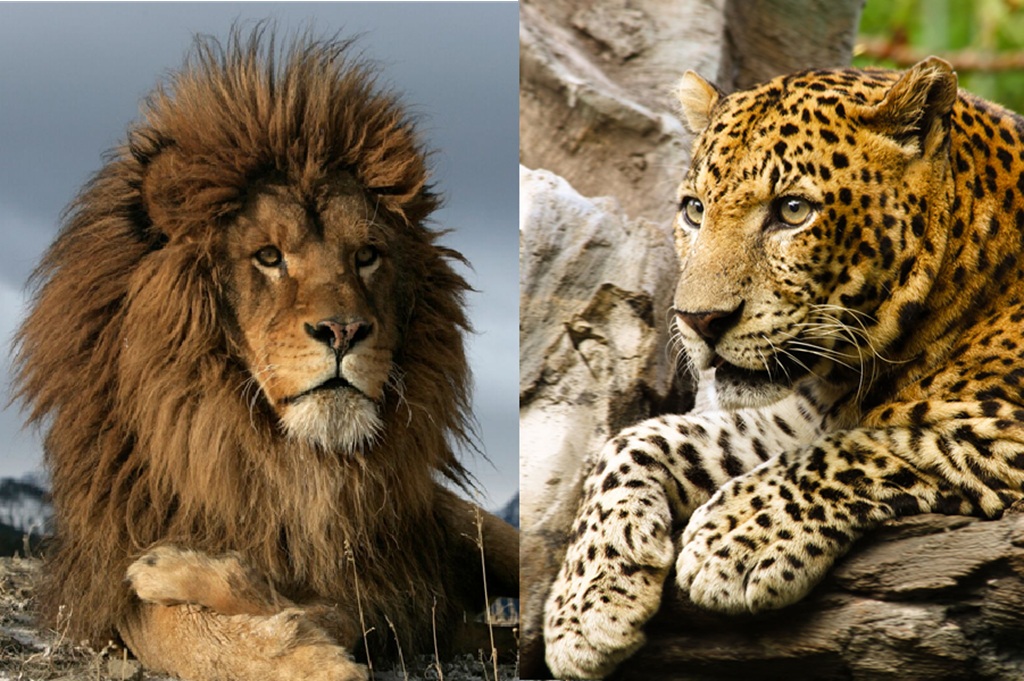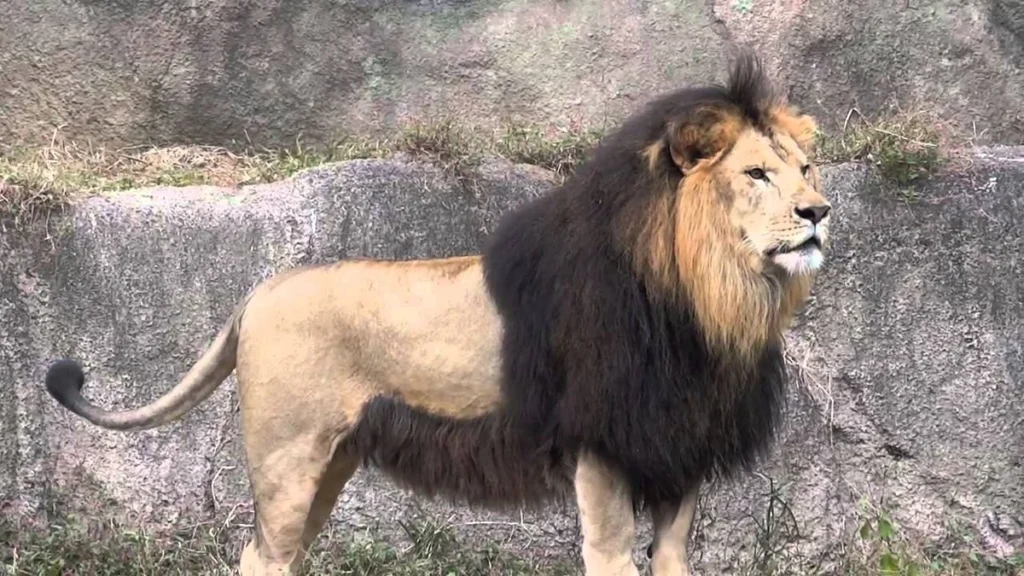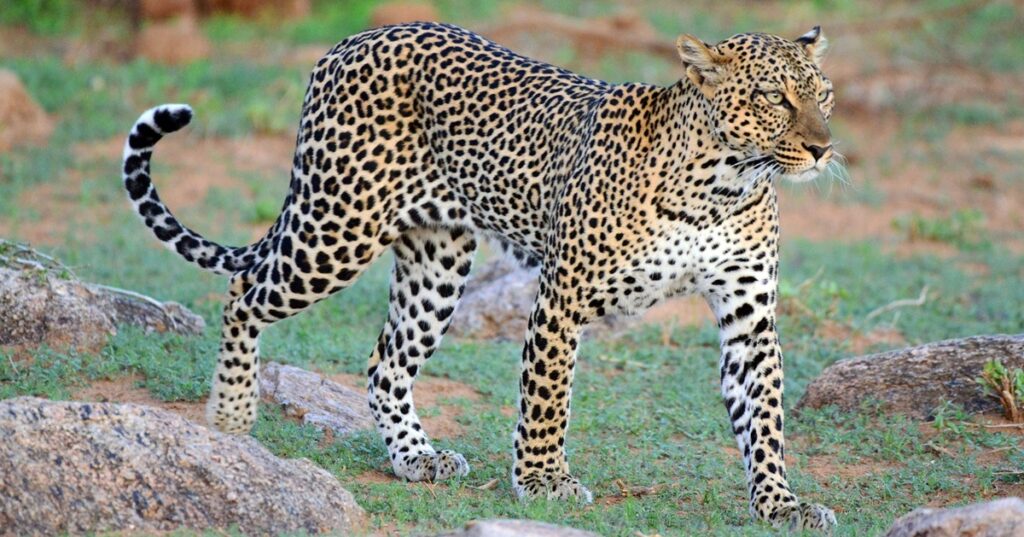The Tale of Two Stars: The “Famous” Atlas Lion and the “Mysterious” Atlas Leopard

In the world of predators, where the spotlight is always on the stars, two “star” brothers from the same family, Panthera, competed for the title of “Lord of the Atlas Mountains.” One was a celebrity, roaring loudly so that his voice would reach the ends of the earth, while the other preferred the ninja life, hiding behind rocks and silently observing. This is the story of the Atlas lion (Panthera leo leo) and his younger brother, the Atlas leopard (Panthera pardus panthera).

The Atlas Lion: The Star Who Retired from Fame
The Atlas Lion was the most famous celebrity in the Kingdom. He didn't need an Instagram account; his mere roar was enough to fill hearts with fear and awe. He was a lion whose weight sometimes reached 270 kilogramsIts length from nose to tip of tail is about 3.3 metersImagine if this star was standing on the scale, it would occupy the entire scale!
But this lion's fame came at a heavy price. While other African lions lived on their vast plains, our proud lion climbed the mountains, showing off his thick fur coat that covered his head and shoulders. He ate up to 12 kilograms of meat daily, roughly the weight of an average-sized sheep, to train for his role as a true king.
But unfortunately, stardom does not last. This star's last appearance on the natural stage was in 1960sSpecifically, in the 1940s, according to some sources, before deciding to "retire early" and disappear completely from the Atlas wilderness. Today, there are no individuals left in the wild, while a small number live in captivity, in the Rabat Zoo, which is considered the largest collection of its species in the world, a living museum of its ancient glories.

Atlas Tiger: The Ninja Who Doesn't Want to Be Seen
On the other hand, there was the Atlas leopard, or as we like to call it, "the mysterious little brother." While the Atlas lion roared to attract attention, the Atlas leopard preferred to hide. It disliked the spotlight and crowds, and was so adept at camouflage that many doubted its very existence.
The Atlas leopard is smaller and leaner than its famous brother, but don't underestimate it! Its speed and hunting acumen are unmatched. It lives a solitary life, content with its secret existence. It feeds on deer and antelope, and has been seen hunting Barbary macaques (Atlas monkeys), perhaps because it was tired of being constantly asked, "Have you seen your famous brother?"
Unlike its clearly extinct sibling, the Atlas leopard remains controversial. Its last confirmed sightings were in 1980s, specifically the year 1983But there are some unconfirmed reports that it still exists today, as if this tiger has decided to make its life an unsolvable mystery.
Comparison table between the two brothers (by numbers!)
| Feature | Atlas lion | Atlas leopard |
| Maximum weight | 270 kg (huge star) | 90 kg (light weight) |
| height | 3.3 meters (small boat length) | 1.9 meters (average human height) |
| Last confirmed appearance | 1960s | 1980s |
| His current state | Extinct in the wild (but living in captivity) | Possibly present (disguised ghost) |
| Favorite place to hunt | on the ground (loudly) | On the trees (in complete silence) |
| fame | Global (elected title!) | Almost non-existent (but that makes him happy) |
Export to Sheets
Overhunting during the colonial era hastened the demise of the masters of the Atlas Mountains. Their hides were a source of pride and vanity among the colonizers, and even a lucrative trade for France and other European powers, which plundered Africa's natural resources for their own petty personal pleasures. Ultimately, it was an unequal battle between noble courage and a despicable military force that kills by stealth and prevarication; it did so to the brave resistance fighters of the Atlas and Rif, just as it did to the noble lion and leopard of the Atlas. Without this, the Atlas Mountains would have remained a habitat for these two noble creatures to this day, because the local environment has never been hostile to them, and the people and land of the Atlas Mountains have grown accustomed to understanding and harmony with their animals.
Ultimately, these two "stars" remain two sides of the same coin. One was famous, the other was mysterious, but both represent a part of Morocco's natural heritage, reminding us that some legends never die, even if their bodies have departed.





